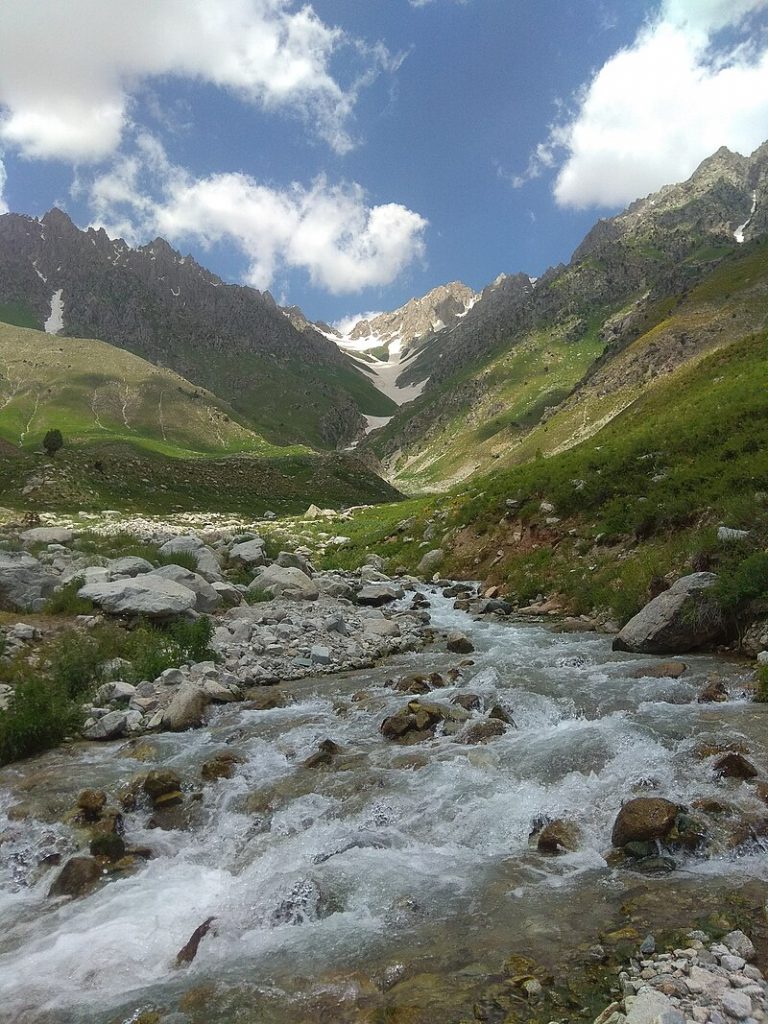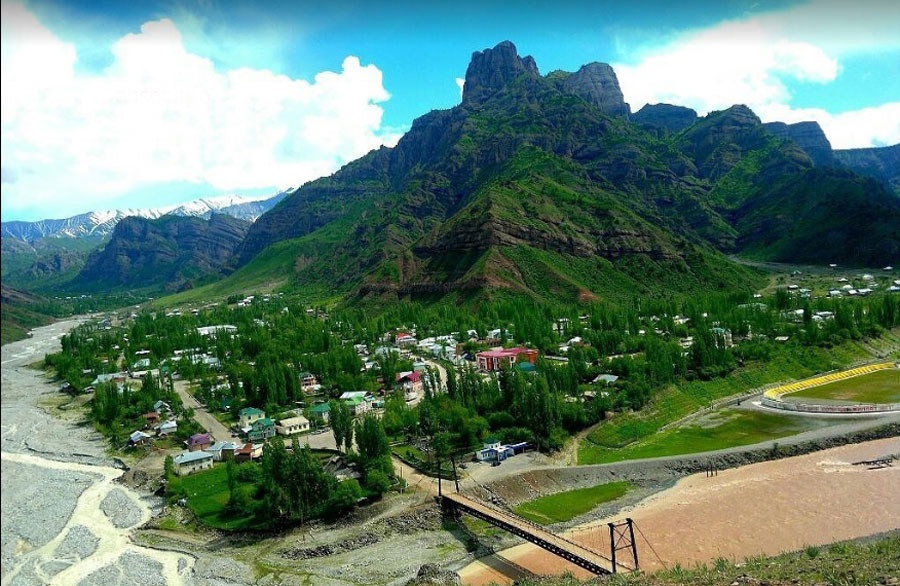The water gushes out of the spring hot enough to brew coffee. By the time it reaches the pools, it’s just pleasantly warm.
But one wouldn’t want to drink it.
What distinguishes the water at Khoja Obi Garm, a sanatorium in Tajikistan’s craggy Hissar Mountain Range, is that it’s naturally infused with radon, a radioactive gas produced by the decay of radioactive substances in soil, rocks and groundwater.

Bathers are advised to get out after a maximum of 15 minutes.
The sanatorium is a seven-story brutalist-style structure, about 6,000 feet above sea level, a concrete shrine to the Soviet Union’s promotion of mandatory worker vacations.
Alongside radon showers, baths and hydrotherapy, there are beauty treatments and tanning “photo barrels.” The longest line is typically for paraffin wax wraps.
But the atmosphere is half spa, half hospital. Most people there were referred by a doctor. As in Soviet times, new visitors are seen by a doctor or nurse.
“This kind of water — you can’t find it anywhere,” said Dr. Izatullo Dusov, 74, who has treated patients with it for decades.
Medics employ radon therapies elsewhere in Europe — mostly for rheumatic conditions, according to Germany’s radiation regulator, which says spa treatments are “not advised.”

Health agencies monitor naturally occurring radon as a serious health risk. The U.S. Environmental Protection Agency says radon exposure is the leading cause of lung cancer in nonsmokers and raises smokers’ lung cancer risk.
At Khoja Obi Garm, the food is basic, but the watermelon — a pride of Tajikistan — is plentiful.
In the evenings, there is a cultural program at the sanatorium’s newly renovated theater.

Performers sing traditional Tajik songs, while guests let loose, dancing and clapping along.
Outside, guests can pick camomile flowers for tea, and the more adventurous can hike up the gorge.
The sanatorium was closed and badly damaged during a bloody civil war in the 1990s. It was renovated at the decree of an authoritarian who then emerged as president, Emomali Rahmon.
Portraits of “The Founder of Peace and National Unity, Leader of the Nation,” as he is known, hang on many walls there, and he has a private mountain retreat several miles down the gorge.

The staff take pains to explain that exposure to the water should be limited to small doses.
But many guests prefer to immerse themselves for far longer than is advised. “There are two things you don’t have enough of in life — youth and health,” said one guest, Hdoyod, 72.
Between tasks, the sanatorium’s cleaners eat, tidy their eyebrows and listen to music.
Many visitors are veterans with civil war injuries, and the paraffin wax treatment is among their favorites.
Aktan Hudusov, 64, went at his wife’s urging, to ease joints damaged by freezing mountain winters when he was a soldier.
“I should have started coming here sooner,” he said.
Some guests seek out newer treatments like a “King Kong massage,” which staff members say involves donning a helmet and being attached to a Chinese machine that blows pressurized air.
When the water source was discovered in the 1870s, it became a religious shrine.
But after the Russian Revolution, sanatoria were built across the Soviet Union, including in far-flung republics like Tajikistan. Khoja Obi Garm started accepting guests in 1934, initially in tents. The site was used as an agricultural warehouse during World War II.

In recent years, smaller, more modern spas have opened nearby. And Russia’s war in Ukraine has changed things again, bringing a new clientele.
“I used to go to Crimea — to Yalta,” said Hasan Tajiddin, 72, a retired factory boss. After Ukraine struck a bridge into Crimea, he made different plans.
Mr. Tajiddin said he served in the Red Army far away, near Austria. The sanatorium reminded him of days some older Tajiks romanticize.
“Everyone here who lived in the U.S.S.R. understands why I think it was good,” he said. “Back then, we were all equal.”
Source: The New York Times


























